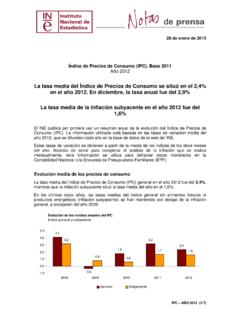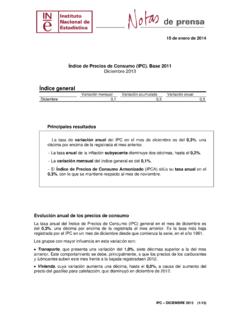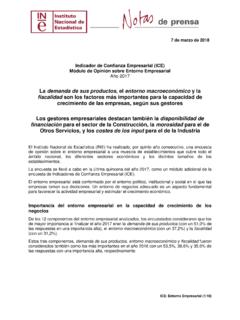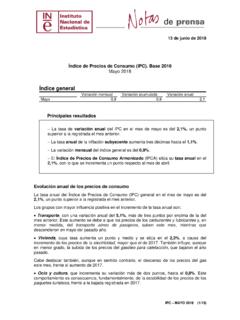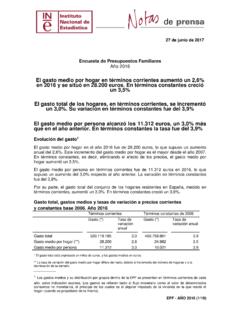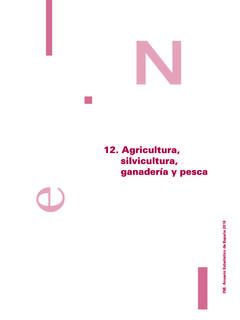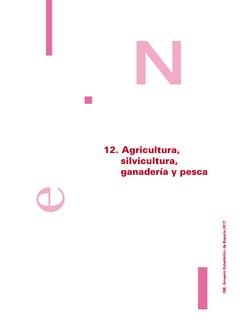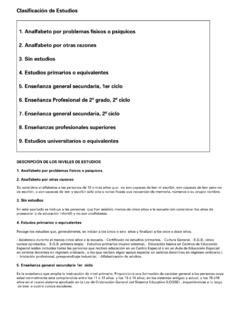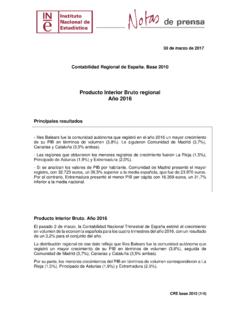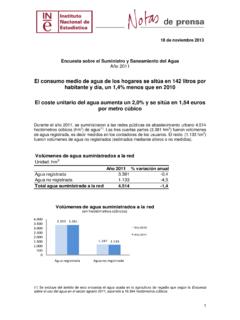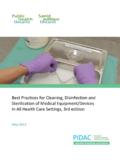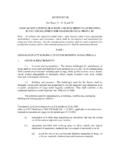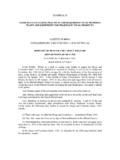Transcription of Cleaning Services Methodology
1 Cleaning Services Methodology Introduction The Industrial Cleaning Services Survey is part of the Services Sector Statistics plan of the European Union Commission, proposed for the purpose of achieving a harmonised set of company statistics. The Methodology used follows the guidelines established by the Statistical Office of the European Communities (Eurostat) for Services statistics. This survey covers the statistical study of group of the National Classification of Economic Activities (CNAE-93) relating to activities performed by industrial Cleaning companies dedicated fundamentally to the rendering of Services to other companies.
2 The survey researches a broad spectrum of Services provided, such as: interior Cleaning of buildings, Cleaning of glass, Cleaning of means of transport, disinfection , extermination of rodents, pest control of insects, chimney sweeping, security Services , end of construction building Cleaning , Cleaning of fa ades, housekeeping Services , gardening, maintenance of installations and rental and/or sale of machinery and/or products for industrial Cleaning . For obtaining economics information, the most appropriate source is the actual accounts of participating companies, since in that way it is easier for them to respond and data obtained is made more uniform.
3 For this reason, in the questionnaire economic information is requested adjusted to the General Accounting Plan. The periodicity of surveys referring to these activities is greater than one year. Objectives The main objective of the survey is to study structural and economic features of companies whose main activity is provision of industrial Cleaning Services . In order to achieve this, information is collected relating to the different features of companies, such as main activity, legal nature, activity period, premises, company property, variables on employment structure and accounting data such as expenditure, income, capital movements and taxes.
4 The survey covers other objectives, which may be summarised as follows: to enable comparisons to be drawn between Spanish industrial Cleaning Services and those of other European Union countries, as well as generating a pattern of comparability with the rest of the sectors of the economy, mainly the Services sector. To meet the information needs of different statisitcs users and be a useful instrument for National Accounts. To evaluate the quality of the directory used in the survey and the adaptation of the questionnaire to the reality of the sector studied. Survey scope POPULATION SCOPE The population studied is made up of the companies whose main activity is one of the ones included in division of the National Classification of Economic Activities 1993 (CNAE-1993).
5 Industrial Cleaning activities Industrial Cleaning activities This class comprises: the interior Cleaning of all types of buildings, including offices, factories, businesses, institutions and other business and professional buildings, as well as residential blocks. window 1 National Statistics Institutecleaning. The Cleaning of chimneys, fireplaces, ovens, incinerators, boilers, ventilation ducts and air extractors. This class also includes: disinfection , rat extermination and insect extermination of buildings, boats, trains. Cleaning of trains, buses, planes, etc. This class excludes Agricultural and livestock pest control Steam Cleaning , sand blasting and similar of building exteriors Cleaning of recently built buildings - Washing of rugs and carpets and Cleaning of hangings and curtains - Domestic service - Labour recruitment and provision of personnel TIME SCOPE The survey's reference period is the year 1995, except for the number of establishments and staff employed variables, which take 30 September 1995 as the reference date.
6 GEOGRAPHICAL SCOPE All statistical units located in Spanish state territory are object of investigation. Statistical units The statistical unit can be defined as the element or component of the population under observation and investigation referred to in the tabulation of the data of the statistical aggregates obtained as a result of the surveys. It has been used as the only statistics for the company whose main activity is the provision of IT Services described in the population scope. A company is also the informant unit, because, since it is perfectly defined and located, and since it has the accounting and employment data available, the response is provided and homogeneous information is obtained.
7 The company is the smallest combination of legal units that constitutes an organisational unit that produces goods or Services , and which has a certain degree of decision-making autonomy, especially in relation to the allocation of their current resources. A company may carry out one or more activities in one or several local units. A company can correspond to one single legal unit. Company features MAIN ACTIVITY Production activity entitled economic activity is the result of a combination of resources that lead to the creation of specific goods or the provision of specific Services that can be quantified monetarily An activity is characterised by product entries (goods and Services ), a production process and the products created.
8 A company's main activity is regarded as being that which contributes most to its added value, which in this survey is the provision of industrial Cleaning Services . Nevertheless, due to the difficulties faced by companies in calculating added value when various activities are carried out, the activity which generates the greatest turnover is considered the main activity or, failing that, the activity which employs the greatest number of persons. Companies may carry out activities other than that defined as the main activity, as 2 National Statistics Institutesecondary activities. Secondary activities are generally carried out jointly with the main one, although in some cases it may be carried out independently and even in premises other than those given over to the main activity.
9 Secondary activities on which information is obtained are those most closely tied to industrial Cleaning Services . It considers: - security Services - end of construction building Cleaning , Cleaning of fa ades, housekeeping Services , gardening, maintenance of installations and rental and/or sale of machinery and/or products for industrial Cleaning - other Services not previously mentioned. LEGAL NATURE This is the legal status under which the company operates. The following categories are considered: individual: includes those companies belonging to one or various individuals without the formalisation of the company or group appearing in the legal document.
10 Included here are individual companies made up by free or independent professionals. Legal entity: those companies to which the law grants capacity to exert rights and assume obligations have legal personality. The following modalities are distinguished: Public Limited Company. Private Limited Company. Other legal statuses such as: general partnerships, limited partnerships, joint ownership, cooperatives, foundations, etc. ACTIVITY PERIOD The survey collects information on the seniority of companies and the intensity of their activity. The seniority is determined in relation to the number of years that the company has been carrying out its activity and the intensity is determined by understanding the number of months of activity during the reference year.
